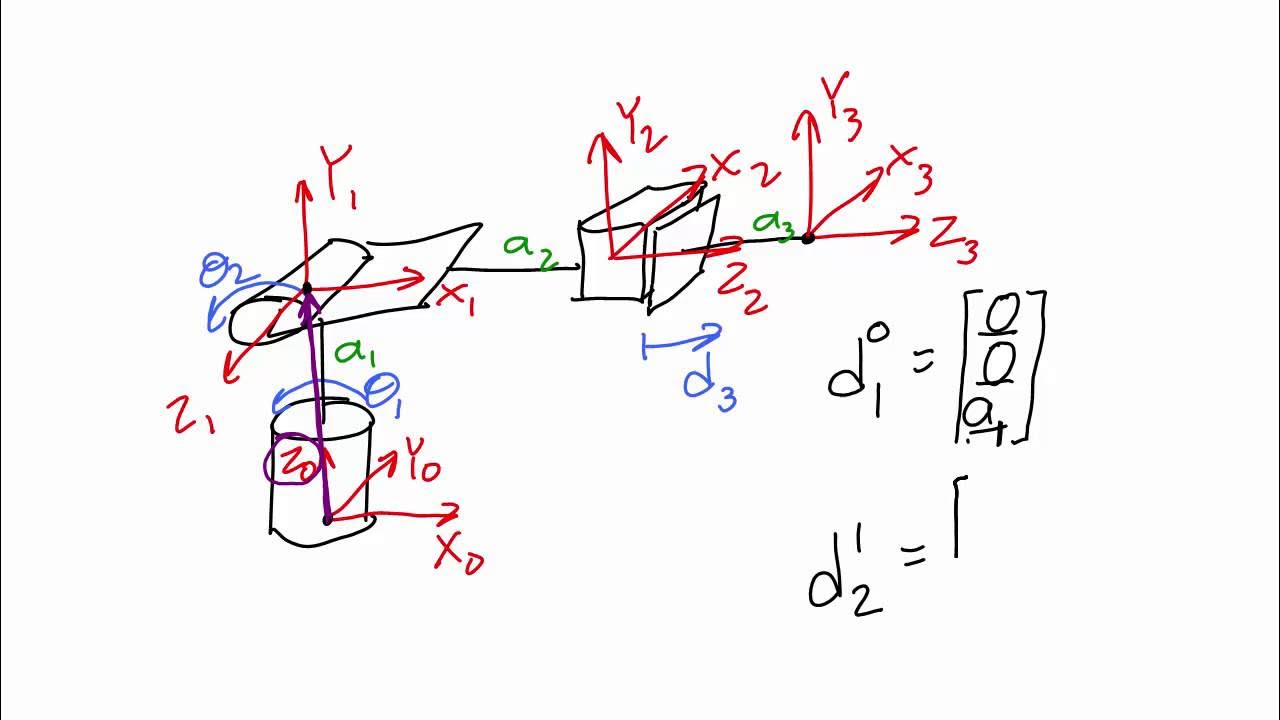mod01lec03 - Introduction to Mobile Robot Kinematics
Summary
TLDRThis lecture delves into the fundamentals of mobile robot kinematics, focusing on the kinematic relationships of land-based robots. It explains the concept of kinematics as the study of motion without considering forces, and highlights the importance of understanding these relationships for system design and motion control. The lecture introduces the degree of freedom for mobile robots, discusses the mapping between control parameters and system behavior, and differentiates between forward and inverse differential kinematics. The course aims to provide a comprehensive understanding of wheeled mobile robot kinematics, setting the stage for further exploration into wheel configurations and kinematic simulations.
Takeaways
- 📘 Mobile Robot Kinematics is a branch of physics that studies motion without considering the forces affecting it, focusing on the geometrical and control parameter relationships governing the system's motion.
- 🔄 The course specifically discusses land-based mobile robots, which are assumed to move on a plane, and does not cover off-planar movements.
- 🗺 Kinematics in robotics involves mapping between two spaces: the input (control parameters) and the system's motion parameters, aiming to understand and design the system's motion.
- 🛠 The kinematic model serves three main purposes: understanding the system's motion, aiding in the design of the mechanical system and motion controller, and predicting or estimating system parameters for system identification.
- 🔢 The concept of 'degree of freedom' is introduced as the minimum number of variables required to uniquely describe the system's motion, which for a land-based mobile robot is typically three: two translations and one rotation.
- 📏 The importance of coordinate systems is highlighted for describing motion, with the Cartesian coordinate system being a simple and commonly used framework in the lecture.
- 📐 The body-fixed coordinate system is used to relate the robot's instantaneous velocities (u, v, r) to its position in the inertial frame, allowing for the description of motion with respect to a fixed point.
- 🔄 The kinematic relationship between the robot's control parameters (u, v, r) and its motion (x, y, psi) is established through the Jacobian matrix, which maps input velocities to the time derivatives of the generalized coordinates.
- 🔠 The lecture distinguishes between 'forward' and 'inverse' differential kinematics, where the former finds system motion given input velocities, and the latter finds the required input velocities for a desired motion.
- 🔧 Understanding and applying differential kinematics is crucial for controlling a mobile robot's motion at the velocity level, which can be open-loop or closed-loop with feedback.
- 🚀 The next steps in the course will cover the types of wheels used in mobile robots, the concept of maneuverability, and the kinematic simulation, building on the foundational knowledge provided in this lecture.
Q & A
What is the main focus of the third lecture on Mobile Robot Kinematics?
-The main focus of the third lecture is on mobile robot kinematics, specifically the kinematic relationship of land-based mobile robots, and how to obtain that relationship to further explore aspects such as forward and inverse differential kinematics.
What is kinematics in the context of physics and robotics?
-Kinematics is a branch of physics that studies motion without considering the forces causing the motion. In robotics, kinematics involves mapping the geometrical relationships that govern the motion of a system and the relationship between control parameters and the system's behavior in state space.
Why is a kinematic model necessary for mobile robots?
-A kinematic model is necessary for understanding the system's motion, aiding in the design of the mechanical system, and for designing proper motion controllers. It can also be used for navigation system design, performance tuning, and system identification or parameter estimation.
What are the three purposes of a kinematic model in robotics as mentioned in the lecture?
-The three purposes are to understand the system's motion, to design the mechanical system (locomotion system), and to design motion controllers and navigation systems for performance tuning.
What is meant by 'degree of freedom' in the context of mobile robots?
-The 'degree of freedom' refers to the minimum number of independent variables required to describe the motion of a system in a unique way. For land-based mobile robots, the degree of freedom is typically 3, involving two translations and one orientation in a plane.
How many degrees of freedom are required to describe motion in a 3-dimensional space?
-In a 3-dimensional space, six degrees of freedom are required, which include three translations and three orientations.
What is the difference between forward and inverse differential kinematics?
-Forward differential kinematics is about finding the system's motion (time derivatives of generalized coordinates) given the input velocity commands. Inverse differential kinematics, on the other hand, is the process of finding the required input velocity commands for a desired motion trajectory (time derivatives of generalized coordinates).
What is the role of the Jacobian matrix in mobile robot kinematics?
-The Jacobian matrix is used to map the body-fixed instantaneous velocities (u, v, r) to the time derivatives of the generalized coordinates (x dot, y dot, psi dot). It represents the kinematic transformation between the input velocity commands and the motion of the robot.
What types of motion are considered when discussing the kinematics of a land-based mobile robot?
-The kinematics of a land-based mobile robot considers two types of translations (longitudinal and lateral) and one type of orientation (rotation about its own vertical axis) in a plane.
What is the significance of the coordinate systems in describing the motion of a mobile robot?
-Coordinate systems are essential for defining the position and orientation of a mobile robot. They provide a reference frame for describing motion relative to a fixed point (inertial frame) and for relating the robot's body-fixed velocities to its motion in the plane.
What will be the topics covered in the subsequent lectures following Lecture 3?
-The subsequent lectures will cover topics such as types of wheels used in mobile robots, degree of maneuverability, kinematic simulation, and the relationship between the angular velocity of the wheels and the input command velocities.
Outlines

هذا القسم متوفر فقط للمشتركين. يرجى الترقية للوصول إلى هذه الميزة.
قم بالترقية الآنMindmap

هذا القسم متوفر فقط للمشتركين. يرجى الترقية للوصول إلى هذه الميزة.
قم بالترقية الآنKeywords

هذا القسم متوفر فقط للمشتركين. يرجى الترقية للوصول إلى هذه الميزة.
قم بالترقية الآنHighlights

هذا القسم متوفر فقط للمشتركين. يرجى الترقية للوصول إلى هذه الميزة.
قم بالترقية الآنTranscripts

هذا القسم متوفر فقط للمشتركين. يرجى الترقية للوصول إلى هذه الميزة.
قم بالترقية الآن5.0 / 5 (0 votes)






